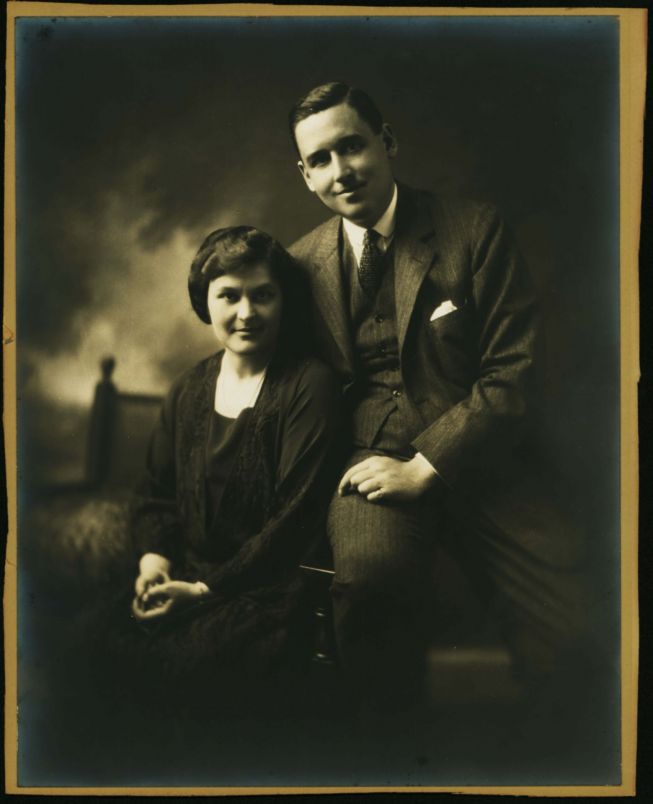St. Margaret Island
Geographic location: Pt Lot 1,2,3, Conc 2, Sherborne Township
Current address: 11120 - 11654 St. Margaret Island
Date range: 1917 - present
Interesting facts:
St. Margaret Island was named after Mrs. Margaret Band the only daughter of the original owner, H. K. Woodruff. During the early spring of 1917, Margaret and several other women from the area lived in a log cabin while their men were off fighting in the Great War. They tapped the maple trees on the island and sent the maple sugar, marked "From St. Margaret Island" to their husbands overseas. The island was also used as a graveyard for the local residents' dogs. When the pets grew old, Dr. Frain, the veterinarian, arrived from Minden by horse and buggy to chloroform them. They were then wrapped in Hudson's Bay blankets and buried in a dog cemetery with individual tombstones. The forget-me-nots that were planted on the gravesites still dot the island and can be seen as you glide by. (Source: Cottage Country Canoe Routes by Kevin Callan, page 35)
History:
- 1909 Hamilton Killally Woodruff of St. Catharines purchased the 75 acre island for 50¢ an acre from The Crown. His cousin, Edward Haynes Woodruff, owned Constance (Goat) Island on Kushog Lake. H. K. Woodruff married Julia Cleveland. Their only daughter, Margaret, married Percy Carruthers Band who won a Military Cross in WW I. They had three children, Margaret, Charles and Robert.
- 1913-14 Main house was constructed on the island. There was already a log cabin for the caretaker and workmen. The house consisted of a large living-dining area, a master bedroom with fireplace, four other bedrooms, a bathroom, kitchen-storeroom and pantry. The architect of the main house, J.P. Wright of Buffalo NY died in the house.
- 1915-18 Stone pump house, water tower, stone cool house, clay tennis court, three boathouses, more bedrooms with fireplaces and another log cabin for servers quarters were added.
- Guests came by train from Lindsay to Gelert then by horse and buggy and buckboard to Minden. They stayed a Sarah Ranson House. Next they continued to the William Stevens farm at the foot of Kushog Lake from which they travelled by boat twelve miles north to the island. The largest of several boats built by the Langdon Boat Works was 'Margaret'. It was thirty feet long powered by a three cylinder engine and was capable of carrying 20 passengers, many seated in wicker chairs. Margaret was operated by Clayton McKay.
- The island was a self-contained community: large vegetable garden, flower gardens, pigs and other domestic animals including a cow, ducks, and chickens. Partridge, deer and moose were hunted on the island. Dogs were highly prized - there is a grave yard for dogs at Lot 10. Forget-me-nots were planted at the dog cemetery and grow through-out this part of the island.
- Fall & winter 1916 Margaret Band trapped enough beaver to make a fur coat and rugs.
- Spring 1917 maple trees were tapped for maple sugar. Daniel Taylor died from a heart attack while carrying sap in pails.
- Woodwards were well served by two caretakers, Wiliiam Stevens then John Rivers. Other workmen were Sam Crawford, Lewis Kent, Delbert Rogers, Johnston Toye, Art Welch and Harold Sedgwick who was the final imployee in 1947.
- 1947 Margaret Band sold 43 acres of mainland to the University of Toronto for what became the Frost Centre. She sold the island to Camp Comak.
Public access: No - now private property
Current use: Private property
Photo: Margaret Julia Woodruff and her husband Percy Carruthers Band - Source: Brock University Digital Repository, Percy Carruthers Band fonds RG 562
